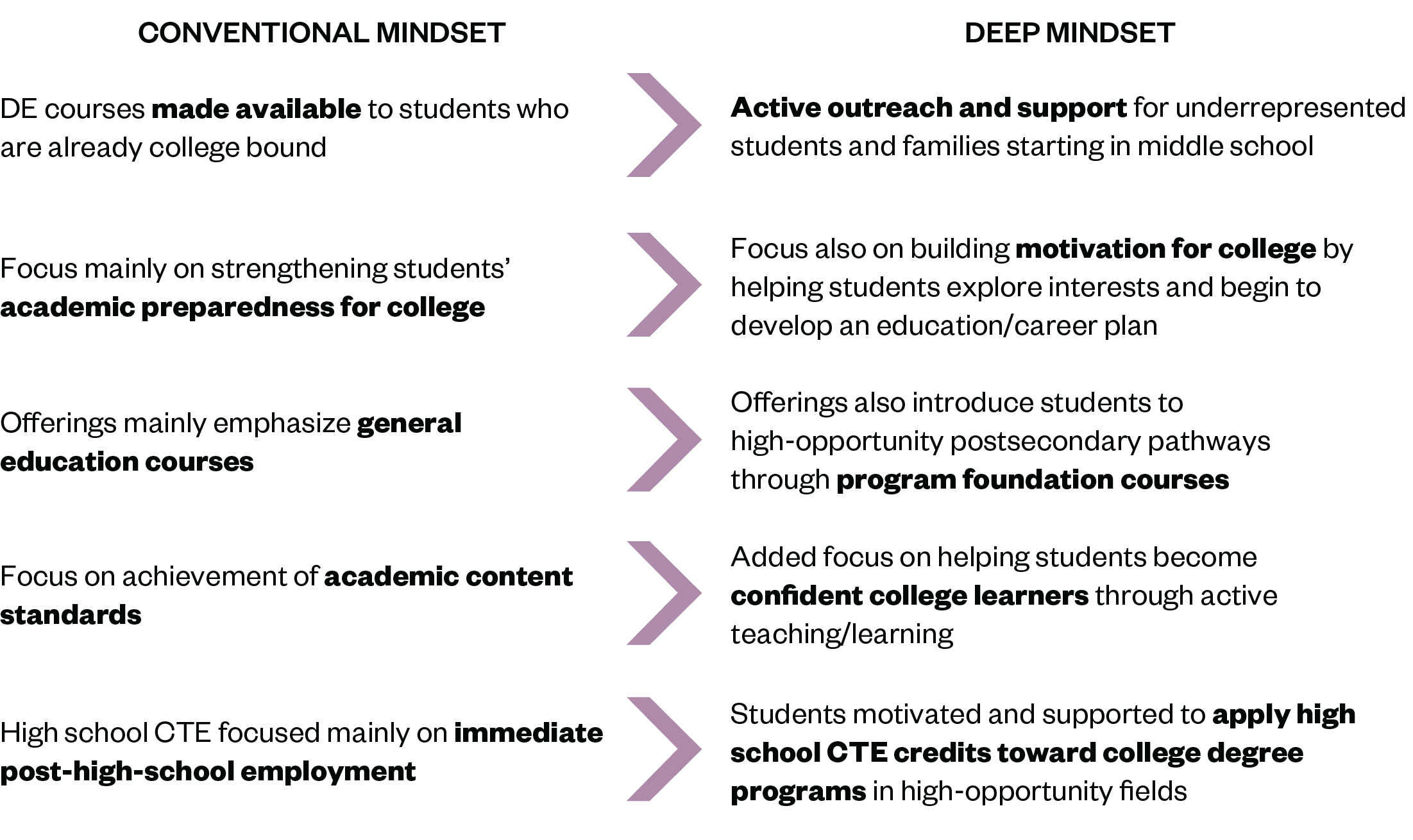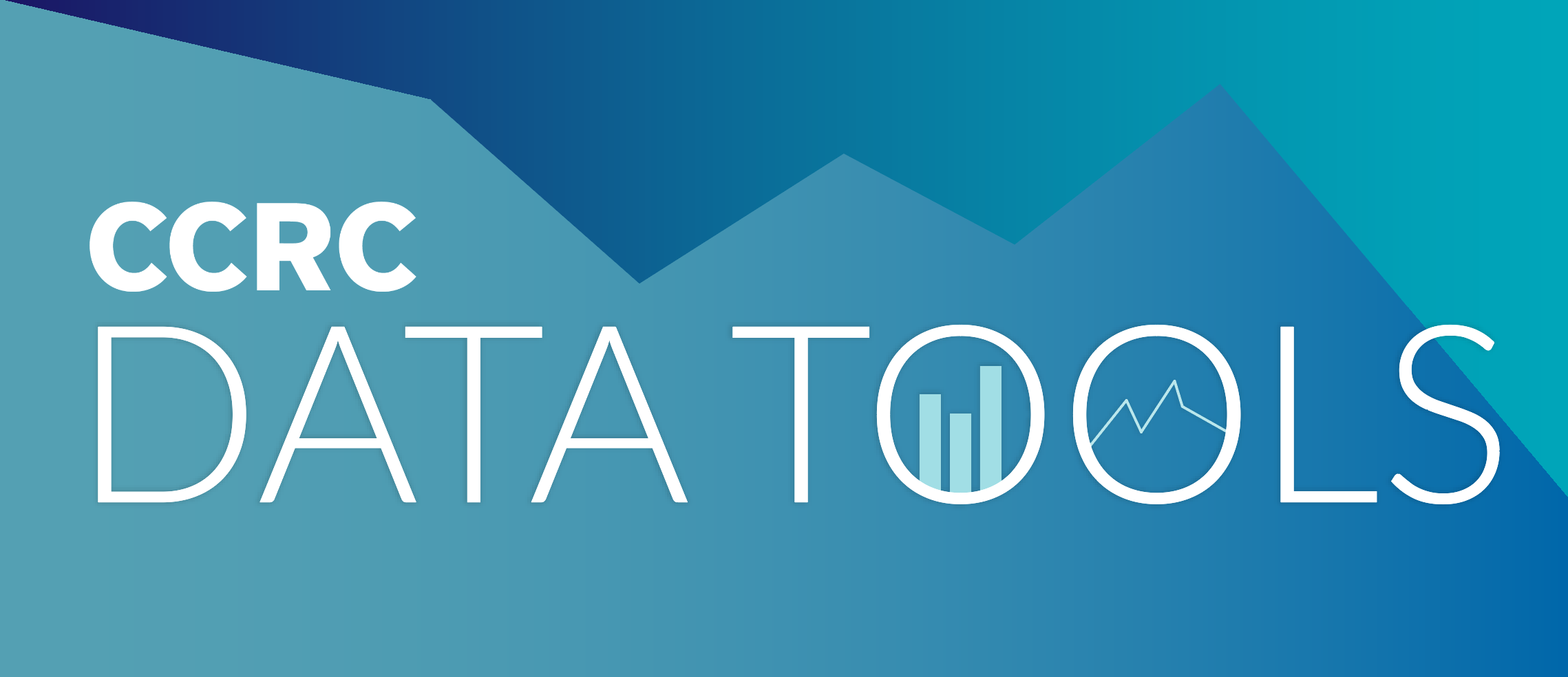By John Fink and Davis Jenkins
Earning at least an associate degree by their mid-20s greatly increases the chances that young people will secure jobs that pay enough to support themselves and their families and provide opportunities for career advancement. Yet, many high schoolers and their families are questioning whether college is worth it, and many others who want to attend college are lost in the transition from high school to college.
Community colleges have been particularly impacted by declining enrollment among recent high school graduates—a trend that started 10 years ago but was exacerbated by the pandemic. An ineffective and inequitable high-school-to-college transition compounds the growing gap in the U.S. between higher education haves and have-nots and squanders talent that is essential for maintaining the economic vitality of communities, states, and the country as a whole.
Dual enrollment, in which high school students take college courses and earn both high school and college credit, has great potential to help make the high-school-to-college transition more effective and equitable—and to do so on a large scale. But dual enrollment programs cannot reach this potential through conventional approaches, which practitioners have called “programs of privilege” because of uneven access or “random acts” because of insufficient course alignment and advising to postsecondary pathways.
All this cries out for a new approach. Two new CCRC publications present a framework for reform we’re calling dual enrollment equity pathways (DEEP), which draws on decades of research and new findings from interviews and site visits this past year with strong community college–K-12 dual enrollment partnerships. In this emerging approach to dual enrollment, community colleges partner with middle and high schools to motivate and prepare underserved students to pursue a postsecondary degree in a field of interest directly after high school by
- reaching out to underserved students and families to encourage and support them to participate in dual enrollment,
- aligning dual enrollment course offerings to bachelor’s and career-technical associate degree programs in high-opportunity fields,
- supporting every student with career and academic exploration, advising, and planning, and
- delivering high-quality instruction that builds students’ confidence as college learners.
The DEEP framework builds on what we know about effective dual enrollment partnerships such as those described in CCRC and the Aspen Institute’s The Dual Enrollment Playbook. It focuses on how guided pathways reforms and key elements from the early college high school model can be applied on a large scale to à la carte dual enrollment coursetaking.
In the first report, Rethinking Dual Enrollment as an Equitable On-Ramp to a Career-Path College Degree Program After High School, we present the case for a new approach, the evidence for the four areas of DEEP practice, and the potential costs, incentives, and opportunities for scaling DEEP practices. The DEEP approach reflects a shift in mindset from conventional thinking (e.g., dual enrollment as “programs of privilege” or “random acts”) to a more strategic approach prioritizing outreach to communities underrepresented in higher education and at high schools with lower college-going rates. It builds on students’ motivation through high-quality teaching in courses that bolster students’ confidence to pursue postsecondary education. And it provides individualized career and college exploration, advising, and support to open up more opportunities for students after high school.

The second publication, DEEP Insights: Redesigning Dual Enrollment as a Purposeful Pathway to College and Career Opportunity, offers ideas for redesigning dual enrollment based on field research at six promising community college–K-12 partnerships in Florida and Texas that have begun to extend guided pathways practices to dual enrollment offerings and have achieved strong results using dual enrollment to expand college access and opportunities for Black, Hispanic, and low-income high school students. The report highlights key components observed for each of the four areas of DEEP practices, with examples from the six colleges and 12 high schools we visited. We also describe how college and K-12 leaders implemented practices by establishing a shared DEEP mindset and creating structures to enable DEEP practices at scale.

The colleges and schools we profiled provide inspiring models for how to broaden the benefits of dual enrollment for Black, Hispanic, rural, low-income, and other communities that have not been well served in the high-school-to-college transition. Over 1.5 million high school students take dual enrollment courses each year, and numerous empirical studies indicate that dual enrollment can benefit all high school students—even those who initially struggled academically in the transition from middle school to high school. While there are costs to implementing dual enrollment following the DEEP framework (e.g., expanded outreach, advising, and supports), there are strong incentives and opportunities for colleges and their school partners to rethink and redesign dual enrollment. Through DEEP outreach, alignment, advising, and support, dual enrollment can better realize its potential as an on-ramp to college and career opportunity for students and families, and, in doing so, it can help build back enrollment for colleges.





